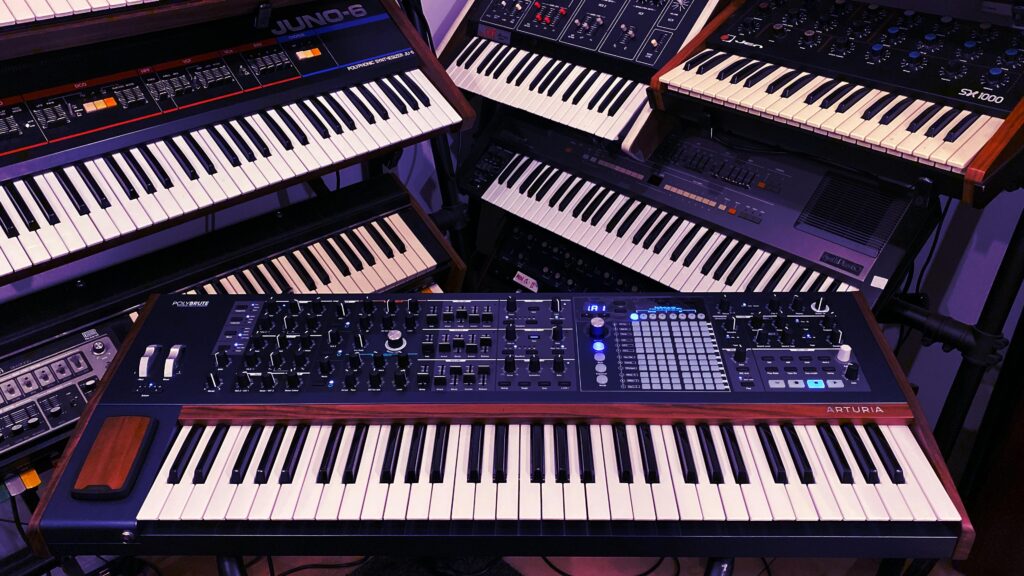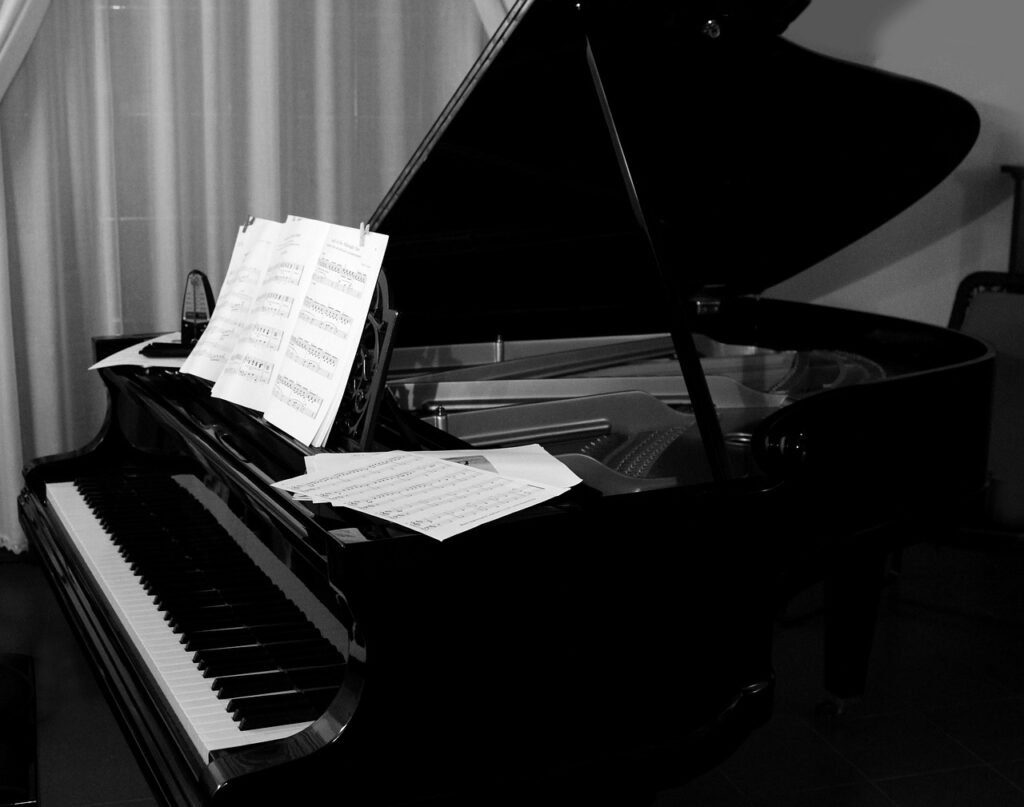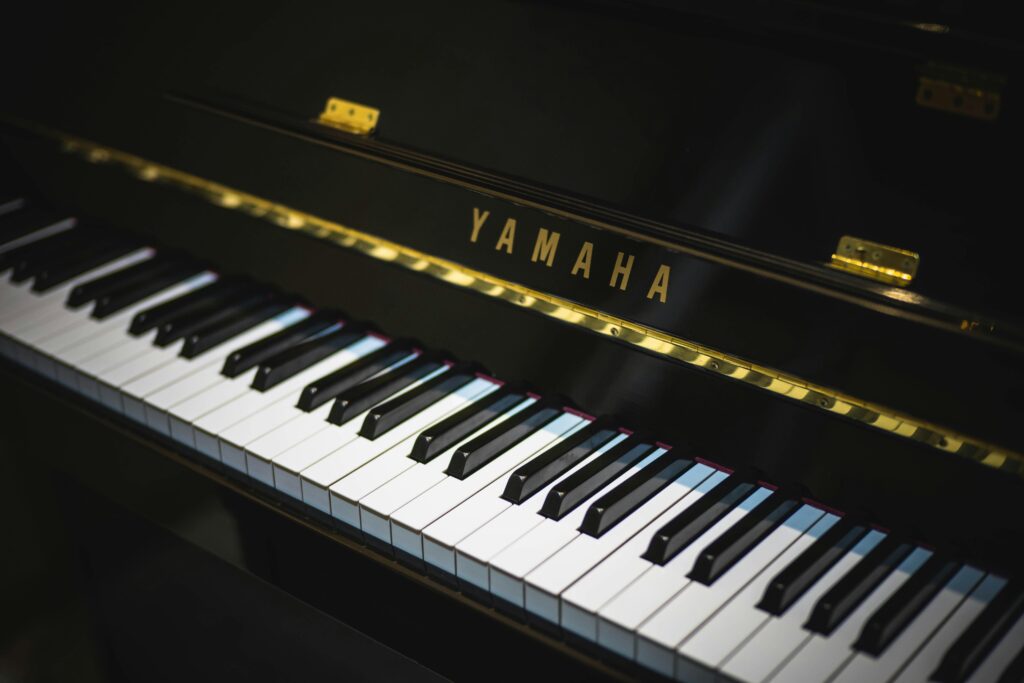In the exciting world of digital music, selecting the right piano or keyboard is a critical step for musicians of all levels and genres. Modern technology has transformed these instruments, offering a broad range of options to suit the unique needs of every pianist or keyboardist. In this article, we explore the different types of digital pianos and keyboards available on the market, breaking down their features, advantages, and uses to help you make an informed decision.
From the sophisticated elegance of digital grand pianos to the versatile convenience of portable keyboards, discover how each type of instrument can enhance your musical experience.
Digital Grand Piano
Digital grand pianos are the closest replica of traditional acoustic grand pianos. They typically feature precise key action and a high-quality sound system integrated into the cabinet, designed to mimic the resonance and feel of a traditional grand piano.
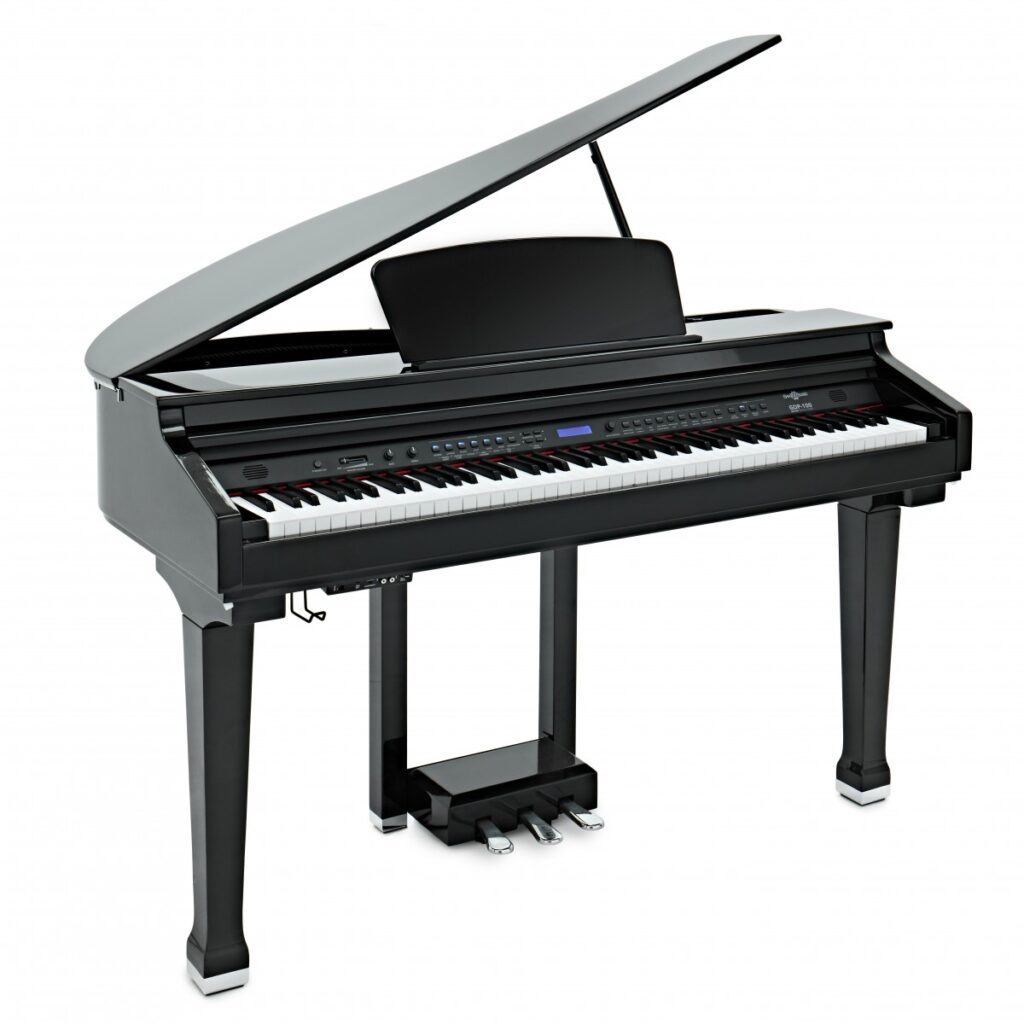
Advantages:
- Elegance: Their classic design adds a sophisticated touch to any space.
- Realistic Touch: Weighted keys replicate the action of an acoustic piano.
- Sound Quality: High-quality sound, often sampled from concert grand pianos.
- Adjustable Volume: Allows for volume control and silent practice with headphones.
- Diverse Features: Includes recording, accompaniment, and connectivity options.
Uses:
- Ideal for pianists seeking a traditional grand piano experience with digital benefits.
- Perfect for live performances in smaller spaces where acoustic pianos aren’t practical.
Digital Upright or Wall Piano
Digital upright pianos are designed to resemble traditional upright acoustic pianos. High-end models may closely resemble compact acoustic pianos in their external design. Primarily intended for home use, these pianos are often more expensive due to their wooden cabinets. Some advanced models feature wooden piano-style keys instead of standard plastic ones.
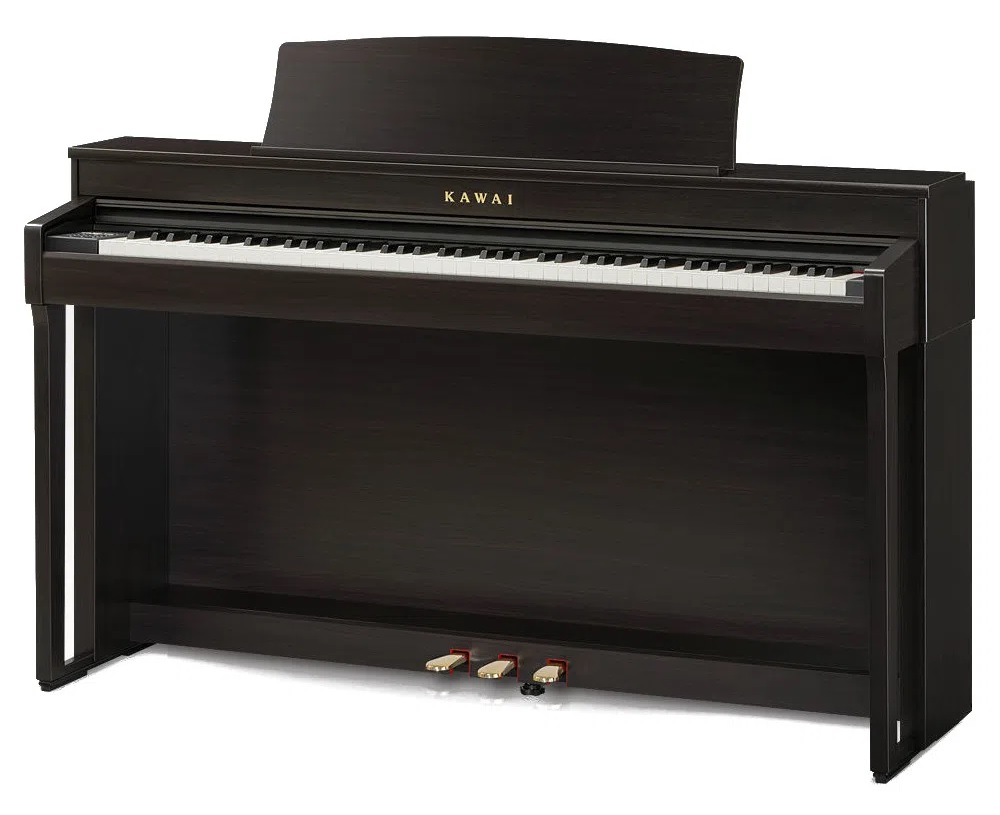
Advantages:
- Space-Saving: Compact design that fits well in smaller spaces.
- Realistic Touch: Simulates the action of an acoustic piano.
- Style Options: Available in various styles and finishes to complement your home décor.
- Connectivity: Many models include MIDI and USB outputs for device integration.
Uses:
- Ideal for homes where space is limited but an authentic piano experience is desired.
- Suitable for piano students at all skill levels.
Stage Piano
Stage pianos are designed specifically for live performances or studio recordings. Unlike digital pianos that aim to mimic acoustic pianos, stage pianos often resemble synthesizers in appearance.
Most stage pianos lack built-in amplification and speakers, as they are typically used with powerful amplifiers or PA systems. However, some models include built-in speakers for convenience.
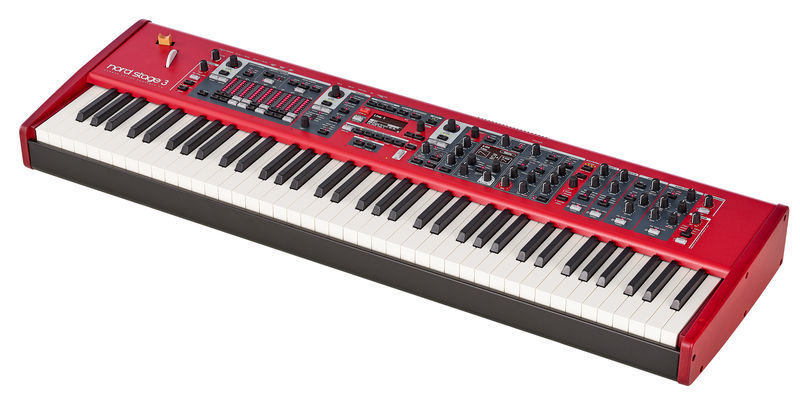
Advantages:
- Portability: Lightweight and easy to transport.
- Sound Variety: Offers a wide range of voices and effects.
- Versatility: Ideal for live musicians and studio use, with real-time sound control.
Uses:
- Perfect for live performances where mobility is crucial.
- Suitable for recording studios to create tracks and recordings.
Arranger Keyboard
As the name suggests, arranger keyboards specialize in music arrangements. They feature extensive libraries of sounds, rhythms, effects, and pre-recorded accompaniment tracks in a variety of musical styles (pop, rock, reggae, country, techno, etc.).
Arranger keyboards often have a busy control panel filled with buttons, knobs, and screens to manage their many features.
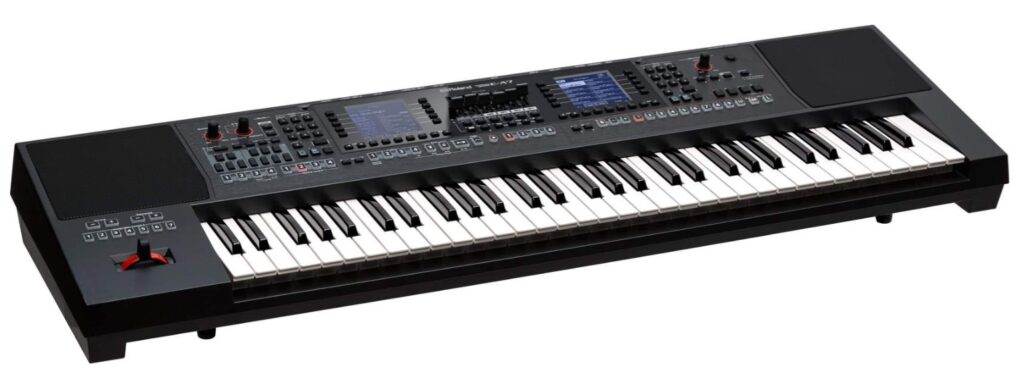
Advantages:
- Automatic Accompaniment: Provides styles and automatic backing tracks to create full music compositions effortlessly.
- Sound Variety: Includes a wide selection of voices and instruments.
- Composition and Arrangement: Ideal for musicians who compose and arrange music.
Uses:
- Perfect for musicians creating music with automatic accompaniment.
- Great for solo performances requiring a complete backing track.
Synthesizer
Synthesizers are electronic instruments that generate audio signals using oscillators. These oscillators produce waveforms that determine the final sound, allowing the creation of virtually any timbre through methods like subtractive, additive, and frequency modulation synthesis. Sounds can be shaped and modulated using filters, envelopes, and low-frequency oscillators.
Synthesizers are available as standalone keyboards or as modules controlled by sequencers, software, or MIDI controllers.
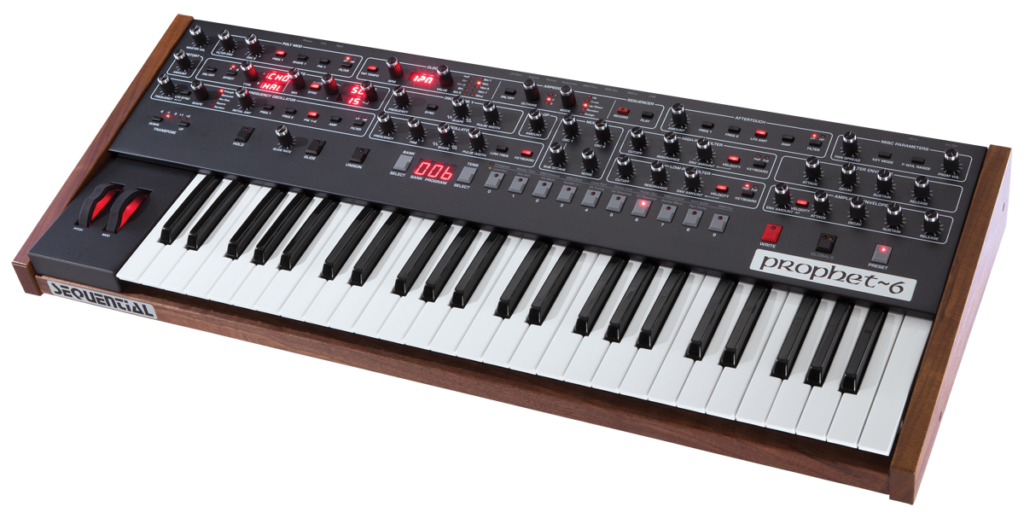
Advantages:
- Sound Creativity: Enables the creation of fully customized sounds.
- In-Depth Control: Offers extensive controls for sound modulation and shaping.
- Musical Exploration: Ideal for experimental and electronic musicians.
Uses:
- Ideal for musicians and producers who want to create unique sounds.
- Frequently used in electronic and avant-garde music.
MIDI Controller
A MIDI controller is a hardware device often used for composing electronic music and sound design. While it resembles a standard digital keyboard, it typically includes knobs, buttons, sliders, pads, and other controls that can be assigned to various parameters in your DAW (Digital Audio Workstation).
Unlike traditional keyboards, MIDI controllers don’t produce their own sound. Instead, they interface with other MIDI-compatible devices, transmitting data such as note velocity, pitch, and duration.
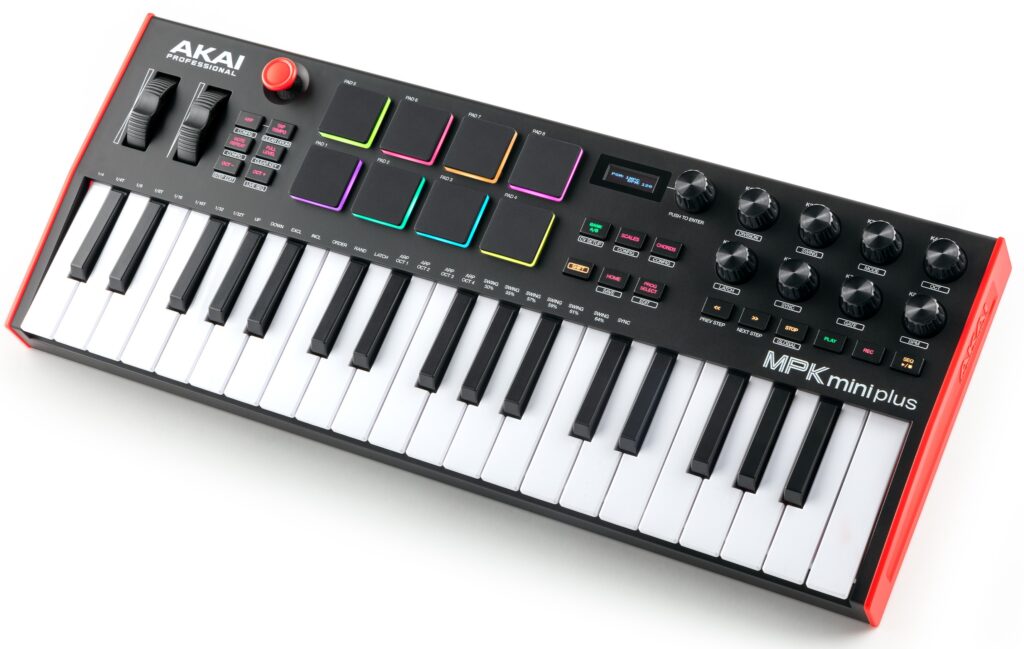
Advantages:
- Flexibility: Controls other MIDI devices instead of generating its own sound.
- Customization: Includes a wide range of knobs and buttons for sound parameter control.
- Integration: Connects to computers and other equipment for music production.
Uses:
- Ideal for music producers seeking full control over their software and virtual synthesizers.
- Essential in recording studios and live productions for real-time sound manipulation.

